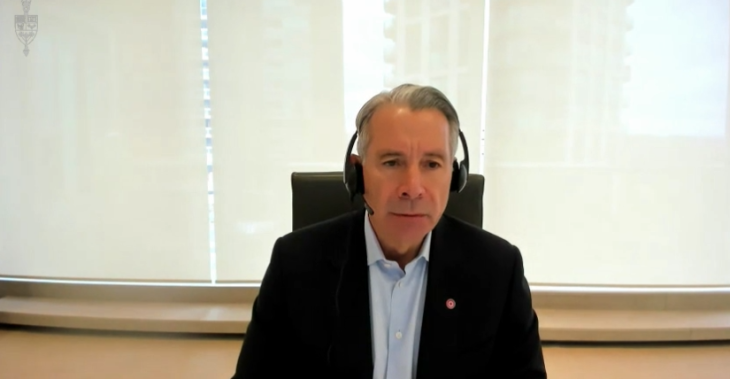
By Ahmad Hathout
Rogers president and CEO Tony Staffieri told members of the House of Commons industry committee Monday that the wireless price increases it announced in January affect only a small percentage of legacy customers and that millions of customers switched providers and plans last year against a backdrop of increasingly lower prices.
Members of the committee called a meeting with the heads of the country’s three largest telecoms to address concerns about wireless prices after Rogers announced that month that it would hike prices for certain off-contract customers by an average of $5 and by as much as $9.
Staffieri conveyed Monday that the discussion has not contextualized the price increases against heightened competitive activity in the market that have driven down prices over time.
“On average, 3,000 price plans and promotions were in market last year – that’s more than 250 per month,” Staffieri said, adding 4.9 million Canadians switched providers last year. “And we see quite a number — over 20 per cent, in fact — of our customer base continually looking at trying to get the best value for money.
“It was important to us to make sure that these customers had choice,” he said. “And so the customers could go online with two clicks, they could get on to a plan that was in market, and give them the best value for money for their circumstance or they could call in and we can work with those customers.
“Our competitive environment drives us to put plans and offers out there that are going to earn the business of Canadians,” he added.
When MPs called for the meeting, they said they felt the price increases meant the telecom was turning its back on commitments made to Innovation Minister Francois-Philippe Champagne, who last appeared before the committee to say Rogers’s purchase of Shaw would result in lower prices and enhanced competition.
Like Bell’s Mirko Bibic and Telus’s Darren Entwistle, who all appeared by teleconference Monday, Staffieri argued that prices have been coming down in the market “month-over-month and year-over-year,” referencing studies by Statistics Canada and the Wall report commissioned by Innovation Canada.
Rogers has reduced the cost of its data on certain wireless packages: For example, a standalone 5G plan with 60 gigabytes of data now costs $50, a drop from its 50 GB plan for $85. Bibic said Bell used to sell 6 gigs for $90 in 2019; now, it sells 60 gigs for $50 on 5G.
“We’ve done over 400 price changes over the last 12 months, 90 per cent of those price changes were price decreases; only 10 per cent were price increases,” added Entwistle. “I’m highly confident that the average price per gigabyte is going to decline prospectively for the benefit of Canadians.”
Entwistle added that Canadians are consuming a “massive” amount of data, more than some international peers. “That is reflective of the fact that wireless provides a tremendous amount of value in people’s lives and allows them to manage their lifestyle logistics more efficiently and effectively.”
In lieu of the presidents’ appearances, the big three had initially sent other executives to appear before the committee a few weeks ago in what became a bit of a shortened dry run, which provided largely the same information: that, according to the aforementioned studies, wireless prices have been in decline relative to the cost of other goods, as high inflation has made daily living more difficult for Canadians.
Rogers plugged some of its low-cost wireless initiatives at the time, including its Connected for Success program that provides a 5G plan at $25 for 3 GB of full-speed data plus a free smartphone for low-income Canadians.
Doug French, Telus’s executive vice president and chief financial officer, said at the time that a significant number of its customers are not signing contracts anymore for the purpose of paying down their devices over time. Instead, they are electing to keep their devices longer and signing up for bring-you-own-device plans, which is the primary reason for lots of Canadians switching providers, he said.
Entwistle said Monday that part of the economics that is not in the telecoms’ control is the price of those devices, which is determined by the manufacturer. He said that cost represents a “significant component” of the cost factor for Canadian customers.
In other fora, some executives at the big three have even pointed to Quebecor’s Freedom Mobile extending into the new year the promotional pricing from the holiday season as an example of a competitive market. Quebecor’s head said the lower prices are a strategy for customer acquisition.
Quebecor, which has introduced new lower cost wireless plans under Freedom, has taken credit for the recent drop in prices. The CRTC also credited the Montreal-based carrier for those price reductions in the market.
Screenshot of Rogers president and CEO Tony Staffieri appearing before the INDU committee via teleconference



